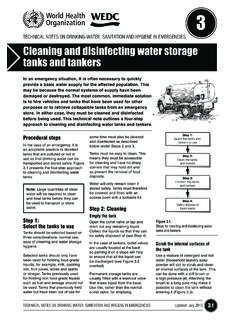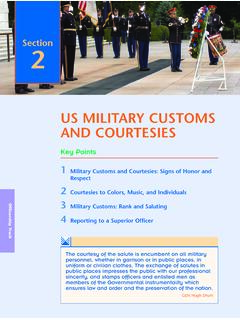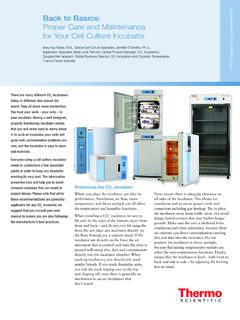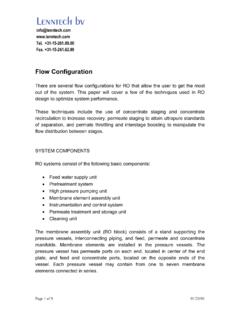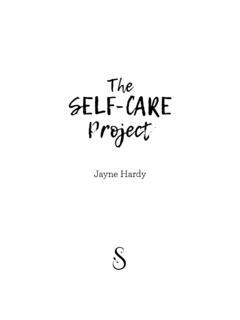Transcription of Toolbox Talk - Safety Harnesses - Lamar University
1 Toolbox Talk Safety Harnesses Document generated in conjunction with the ABS Mariner Personal Safety Project Center pg. 1 The ABS Mariner Personal Safety research project provided input for this Toolbox Talk. This topic has been identified as a common Safety concern. The information provided on this topic may serve as an overview and a refresher. The purpose of this information sharing is to bring to light common hazards and Safety behaviors. Alerting management, crew and visitors to these issues may lead to actions to prevent similar near misses from happening to others and to improved procedure development and ship design. The material in this document is provided for informational purposes only and not as a comprehensive or exhaustive resource on this topic.
2 This material has been compiled from a multitude of sources believed to be accurate; however, ABS assumes no responsibility for the accuracy or currency of this information and encourages you to consult experts in this area for more information. In no event does the content of this document supersede any applicable local, state or federal statutes or regulations. Introduction In the maritime industry employees are often required to work at heights. This introduces the hazard of potentially falling and may result in injury or death. In order to reduce the risk of injury, it may be necessary for personnel to use fall protection. In this Toolbox Talk, Safety Harnesses are discussed as well as the hazards and issues that pertain to them. Types of Safety Harnesses 1.
3 Body belt designed to support a person in a hazardous work position and to reduce the possibility of a fall 2. Chest harness used when there are only limited fall hazards or when retrieving personnel from a tank 3. Full body harness designed to stop free falls; allows the worker to remain in an upright position after a fall Inspection of Safety harness Before putting on a Safety harness, it should be inspected to verify that all the components are in good working order; showing neither damages nor signs of wear and tear. Once a harness has been used to arrest a fall, it should be taken out of service until its integrity can be verified. Shown below are step-by-step instructions on inspecting a Safety harness, these are general guidelines, and should only be used as a reference.
4 The manufacturer s instructions should be the ultimate guide. Check all the webbing for frays, cuts, tears, burns or any other damage o Bending the webbing helps to reveal any surface damage o Pay special attention to areas that are stained and discolored as this might be the result of chemical damage which may break down the fibers of the webbing Inspect all the hardware o Make sure there are no cracks in the hardware; if cracks are present, the hardware should be replaced regardless of the size of any noted crack Make sure the hooks and gates function properly Check the tongues, buckles and clips o Make sure all grommets are secure and they are not frayed, worn, stretched or missing o Check buckle for distortion and sharp edges Make sure all D-rings and rollers do not have any rough or sharp edges Check all rivets and stitching to make sure the harness is still safe to wear o Pull on webbing joints to make sure they are strong Lanyards should be free of cuts, abrasions, burns and deterioration by acids, solvents and other chemicals It is important that inspection steps be followed each time a harness is used to reduce the chance of an incident.
5 Actual Near Miss Prior to going on the hanging staging, an inspector checked for the presence of a tag indicating that the scaffolding was okay to use. When the inspector reached the bottom level, the inspector noticed there was no lifeline to clip a Safety harness. Also, one of the support wires was frayed and nearly parted. Donning a Safety harness As important as it is to inspect a Safety harness prior to its use, it is equally important to don the harness in the proper manner. Putting on a Safety harness incorrectly may result in the harness not working correctly or not working at all. Listed below are instructions on how to properly don a Safety harness. Toolbox Talk Safety Harnesses Document generated in conjunction with the ABS Mariner Personal Safety Project Center pg.
6 2 Discussion Date: _____ Employee Participants: _____ _____ _____ _____ _____ _____ _____ _____ _____ _____ _____ _____ _____Similarly if the manufacturer instructions are different then defer to those instructions. Hold the harness by the back D-ring Shake the harness to allow all the straps to fall in place If the chest, leg and/or waist straps are buckled, release the straps and unbuckle Slip the straps over the shoulders so the D-ring is located in the middle of the back between the shoulder blades Pull the leg strap between your legs and connect to the opposite end; repeat with the second leg strap If it is a belted harness, connect the waist strap after the leg straps; the waist strap should be tight, but not binding Connect the chest strap and position in the mid-chest area; tighten to keep the shoulder straps taut After all straps have been buckled, tighten all buckles so the harness fits snugly but allows for full range of movement.
7 Pass the excess strap through the loop keepers o Verify one loop keeper under mating buckle Mating buckle o Pull the center bar buckle completely through the square link o Allow the center bar buckle to fall into place on top of the square link o Pull the loose end of the strap to tighten adjustment of the harness o Slide the keepers to hold any excess webbing Friction buckle o Pass webbing under the buckle, over the knurled bar and back down between the knurled bar and frame o Pull the web end to tighten Hazards of Safety harness Listed below are some hazards associated with the use of Safety Harnesses . Not fixing the lanyard to a structure or Safety line Fixing the lanyard to an unsuitable anchor point The sudden stop of the harness and line may cause shock injuries Falling out of a poorly adjusted harness Using a poorly maintained or damaged harness may result in its failure Another hazard of Safety Harnesses is suspension trauma, which is the effect of being suspended in the harness.
8 The tightening of the leg straps bears the body weight of the suspended person; gravity pulls the blood down into the legs and reduces the amount of blood flowing in the body. To prevent the pooling of blood in the legs: push vigorously with your legs against a firm surface, mobilizing all limbs to help maintain circulation; position the body in a horizontal position; if possible, rest feet on something or stand up. Actual Near Miss A scaffold user attached his Safety harness to a scaffolding pole he was sitting on. The pole came loose from one of the end clamps allowing the Safety harness to slide off the pole. The scaffold user fell approximately 25 m (82 ft) and was killed as a result. Discussion Safety Harnesses should not be used by any individuals without the proper training Most Safety Harnesses have a service life of five years, check the manufacturer information to determine the service life of the equipment you are using Report and discuss incidents pertaining to Safety Harnesses with your supervisor


